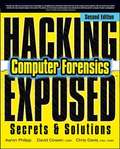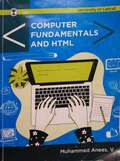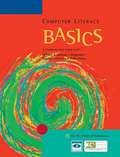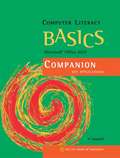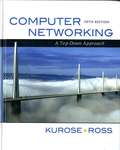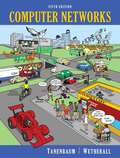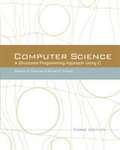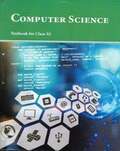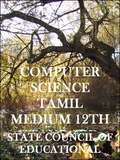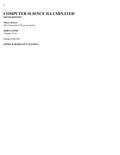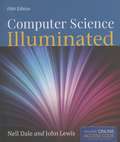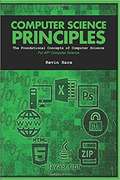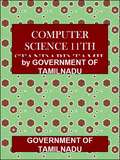- Table View
- List View
Computer Darpan class 7 - GSTB: કમ્પ્યુટર દર્પણ ધોરણ ૭
by Tejas R. Thakkarઓપનસોર્સ લિનક્સ ઓપરેટિંગ સિસ્ટમ આધારિત તેમજ ગુજરાત બોર્ડના કમ્પ્યૂટર વિષયને સંલગ્ન એકમાત્ર કમ્પ્યૂટર સિરીઝ.
Computer Darpan class 8 - GSTB: કમ્પ્યુટર દર્પણ ધોરણ ૮
by Tejas R. Thakkarઓપનસોર્સ લિનક્સ ઓપરેટિંગ સિસ્ટમ આધારિત તેમજ ગુજરાત બોર્ડના કમ્પ્યૂટર વિષયને સંલગ્ન એકમાત્ર કમ્પ્યૂટર સિરીઝ.
Computer Forensics: Secrets and Solutions (Second Edition)
by Aaron Philipp David Cowen Chris Davis"Provides the right mix of practical how-to knowledge in a straightforward, informative fashion that ties it all the complex pieces together with real-world case studies. . . . Delivers the most valuable insight on the market. The authors cut to the chase of what people must understand to effectively perform computer forensic investigations. " --Brian H. Karney, COO, AccessData Corporation The latest strategies for investigating cyber-crime Identify and investigate computer criminals of all stripes with help from this fully updated. real-world resource. Hacking Exposed Computer Forensics, Second Edition explains how to construct a high-tech forensic lab, collect prosecutable evidence, discover e-mail and system file clues, track wireless activity, and recover obscured documents. Learn how to re-create an attacker's footsteps, communicate with counsel, prepare court-ready reports, and work through legal and organizational challenges. Case studies straight from today's headlines cover IP theft, mortgage fraud, employee misconduct, securities fraud, embezzlement, organized crime, and consumer fraud cases. Effectively uncover, capture, and prepare evidence for investigation Store and process collected data in a highly secure digital forensic lab Restore deleted documents, partitions, user activities, and file systems Analyze evidence gathered from Windows, Linux, and Macintosh systems Use the latest Web and client-based e-mail tools to extract relevant artifacts Overcome the hacker's anti-forensic, encryption, and obscurity techniques Unlock clues stored in cell phones, PDAs, and Windows Mobile devices Prepare legal documents that will hold up to judicial and defense scrutiny
Computer Fundamentals And HTML - Calicut University
by Muhammed Anees. V"Computer Fundamentals and HTML" authored by Muhammed Anees. V, a distinguished faculty member at the Department of Computer Science, Cochin University of Science and Technology, stands as a comprehensive guide published by The Calicut University Central Co-Operative Stores Ltd in 2022. Tailored for students enrolled in diverse BSc courses, this book aligns seamlessly with the curriculum set by the esteemed University of Calicut. Its content spans two significant domains: the foundational aspects of computing, covering hardware, software, computer organization, number systems, Boolean algebra, problem-solving methodologies, and algorithms; and a detailed exploration of HTML, encompassing the rudiments of web design, an overview of HTML5, advanced HTML concepts, and CSS. By prioritizing simplicity, clarity, and conciseness, the book adeptly elucidates intricate concepts, supplemented by practical applications and examples. Notably, it diligently references its information sources and encourages constructive feedback from its readers, fostering an environment conducive to continuous improvement and enhanced learning experiences.
Computer Integrated for Sixth SEM B.E Mechanical Engineering
by Prof. Bharat VinjamuriComputer Integrated for Sixth SEM B.E Mechanical Engineering.
Computer Integrated Manufacturing for Sixth SEM B.E Mechanical Engineering
by Prof. Bharat VinjamuriComputer Integrated Manufacturing For VTU BE 6th Sem Mechanical Engineering
Computer Literacy Basics: A Comprehensive Guide to IC3
by Ann Ambrose Marly Bergerud Donald Busche Connie Morrison Dolores Wells-PusinsComputer Literacy BASICS provides an introduction to computer technology and concepts. This text maps to the IC3 standards and is organized into three key components: Computing Fundamentals, Key Applications, and Living Online. It provides thorough instruction on the various uses of the computer, important accessories, networking principles and covers key applications such as word processing, spreadsheets, and presentation applications. In addition, Computer Literacy BASICS covers e-mail and Internet principles such as managing e-mail and contacts, searching for a topic online, and how computers affect every day life. Strong end-of-chapter exercises and review material reinforce important topics covered in the lesson and allow students to demonstrate their knowledge of the material.
Computer Literacy Basics: Microsoft Office 2007 Companion
by Jennifer T. CampbellComputer Literacy BASICS: Microsoft Office 2007 Companion is designed to accompany Computer Literacy BASICS, Second Edition, providing updated coverage on Office 2007. Step-by-step instructions provide students with an overview of the Office 2007 software and will help them gain the skills necessary to pass the IC3 certification exam.
Computer Networking: A Top-Down Approach (Sixth Edition)
by James F. Kurose Keith W. RossComputer Networking continues with an early emphasis on application-layer paradigms and application programming interfaces (the top layer), encouraging a hands-on experience with protocols and networking concepts, before working down the protocol stack to more abstract layers. This book has become the dominant book for this course because of the authors' reputations, the precision of explanation, the quality of the art program, and the value of their own supplements.
Computer Networking: A Top-down Approach (5th Edition)
by James F. Kurose Keith W. RossBuilding on the successful top-down approach of previous editions, the Fifth Edition of Computer Networking continues with an early emphasis on application-layer paradigms and application programming interfaces, encouraging a hands-on experience with protocols and networking concepts. With this edition, Kurose and Ross have revised and modernized treatment of some key chapters to integrate the most current and relevant networking technologies. Networking today involves much more than standards specifying message formats and protocol behaviors-and it is far more interesting. Professors Kurose and Ross focus on describing emerging principles in a lively and engaging manner and then illustrate these principles with examples drawn from Internet architecture.
Computer Networks
by Andrew Tanenbaum David WetherallAppropriate for Computer Networking or Introduction to Networking courses at both the undergraduate and graduate level in Computer Science, Electrical Engineering, CIS, MIS, and Business Departments. <p> Tanenbaum takes a structured approach to explaining how networks work from the inside out. He starts with an explanation of the physical layer of networking, computer hardware and transmission systems; then works his way up to network applications. Tanenbaum's in-depth application coverage includes email; the domain name system; the World Wide Web (both client- and server-side); and multimedia (including voice over IP, Internet radio video on demand, video conferencing, and streaming media. Each chapter follows a consistent approach: Tanenbaum presents key principles, then illustrates them utilizing real-world example networks that run through the entire book--the Internet, and wireless networks, including Wireless LANs, broadband wireless and Bluetooth. The Fifth Edition includes a chapter devoted exclusively to network security. The textbook is supplemented by a Solutions Manual, as well as a Website containing PowerPoint slides, art in various forms, and other tools for instruction, including a protocol simulator whereby students can develop and test their own network protocols.
Computer Science: A Structured Programming Approach Using C (3rd edition)
by Behrouz A. Forouzan Richard F. GilbergThe third edition of Computer Science: A Structured Programming Approach Using C continues to present both computer science theory and C-language syntax with a principle-before-implementation approach. Forouzan and Gilberg employ a clear organizational structure, supplemented by easy-to-follow figures, charts, and tables. The new edition has been thoroughly updated to reflect the new C99 standard, and includes a revised chapter sequence to better aid student learning.
Computer Science class 11 - NCERT
by National Council of Educational Research and TrainingComputer science as a discipline has evolved over the years and has emerged as a driving force for socio-economic activities. it has made continuous inroads into diverse areas be it business, commerce, the science of computer and Communication technologies, There has been a paradigm discipline is in focus because of the expectations from the school pass outs Today, We are living in an interconnected world where computer-based application influence the way we learn, Communicate, commute or even Socialise.
Computer Science class 11 - NCERT - 23
by National Council of Educational Research and TrainingThe NCERT Computer Science textbook for Class 11 aims to provide high school students with a foundational understanding of computer science and programming. The book starts with an introduction to what a computer is, its historical evolution, and its fundamental components. It covers hardware aspects like CPUs, memory, and I/O devices, as well as software elements including operating systems and application software. The textbook also delves into programming languages, offering a beginner's guide to algorithmic problem-solving and coding. It generally includes languages like Python or C++ to teach the basics of programming constructs like loops, conditional statements, and functions. Data representation and management are also discussed, offering insights into how data is stored and manipulated in a computer system. Networking fundamentals, including the basics of the internet and web technologies, are covered to help students understand how computers communicate. Security aspects, ethical computing, and emerging technologies are often included to give a rounded perspective. Overall, the textbook aims to be a comprehensive guide for students new to the realm of computer science.
Computer Science class 12 - Tamil Nadu Board: கணினி அறிவியல் மேல்நிலை இரண்டாம் ஆண்டு தமிழ்நாடு அரசு
by State Council of Educational Research Trainingந்தப் புத்தகத்தில் இடம்பெற்றுள்ள அனைத்து பாடல்களும் கணினியைப் பற்றிய அடிப்படை அறிவிற்கும் அப்பாற்பட்டு உயர்தர கருத்துக்களை உள்ளடக்குகின்றன. மென்பொருள் கற்றலுக்கு உரிய சில எளிய வழிமுறைகள் அழகிய முறையில் வடிவமைக்கப்பட்டுள்ளன. மேலும், பன்னிரெண்டாம் வகுப்பிற்கு மேல் கல்லூரிகளில் பயில விரும்பும் மாணவர்களுக்கு இப்புத்தகம் ஒரு சிறந்த வழிகாட்டியாகும்.
Computer Science for Cambridge International AS and A Level
by Sylvia Langfield Dave DuddellThe aim of the Cambridge International AS and A Level Computer Science syllabus is to encourage learners to develop an understanding of the fundamental principles of computer science and how computer programs work in a range of contexts. Learners will study topics including information representation, communication and Internet technologies, hardware, software development, and relational database modelling. As they progress, learners will develop their computational thinking and use problem solving to develop computer-based solutions using algorithms and programming languages. Studying Cambridge International AS and A Level Computer Science will help learners develop a range of skills such as thinking creatively, analytically, logically and critically. They will also be able to appreciate the ethical issues that arise with current and emerging computing technologies.
Computer Science Illuminated
by Nell Dale John LewisFully revised and updated, the Sixth Edition of the best selling text Computer Science Illuminated retains the accessibility and in depth coverage of previous editions, while incorporating all new material on cutting edge issues in computer science. Authored by the award winning Nell Dale and John Lewis, Computer Science Illuminate d's unique and innovative layered approach moves through the levels of computing from an organized, language neutral perspective.
Computer Science Illuminated (Fifth Edition)
by Nell Dale John LewisRevised and updated with the latest information in the field, the Fifth Edition of best-selling Computer Science Illuminated continues to provide students with an engaging breadth-first overview of computer science principles and provides a solid foundation for those continuing their study in this dynamic and exciting discipline. Authored by two of today's most respected computer science educators, Nell Dale and John Lewis, the text carefully unfolds the many layers of computing from a language-neutral perspective, beginning with the information layer, progressing through the hardware, programming, operating systems, application, and communication layers, and ending with a discussion on the limitations of computing. Separate program language chapters are available as bundle items for instructors who would like to explore a particular programming language with their students. Ideal for introductory computing and computer science courses, the fifth edition's thorough presentation of computing systems provides computer science majors with a solid foundation for further study, and offers non-majors a comprehensive and complete introduction to computing. New Features of the Fifth Edition:- A new chapter on computer security provides readers with the latest information on preventing unauthorized access; types of malware and anti-virus software; protecting online information, including data collection issues with Facebook, Google, etc. ; security issues with mobile and portable devices; and more. - A NEW section on cloud computing offers readers an overview of the latest way in which businesses and users interact with computers and mobile devices. - The section on social networks has been rewritten to include up-to-date information, including new data on Google+ and Facebook. - The sections covering HTML have been updated to include HTML5. - Revised and updated Did You Know callouts are included in the chapter margins. - The updated Ethical Issues at the end of each chapter have been revised to tie the content to the tenth strand recommended by the ACM, which stresses the importance of computer ethics. Accompanied by a comprehensive suite of instructor resources including answers to the end of chapter exercises, answers to the optional lab exercises, PowerPoint Lecture Outlines, Image Bank, and a complete Test Bank. Every new copy is packaged with full student access code to the robust Companion Website featuring:Animated Flashcards; Relevant Web Links; Crossword Puzzles; Interactive Glossary; Digital Lab Manual; R. Mark Meyer's labs, Explorations in Computer Science; Additional programming chapters, including Alice, C++, Java, JavaScript, Pascal, Perl, Python, Ruby, SQL, and VB. NET; C++ Language Essentials labs; Java Language Essentials labs; Link to Download Pep/8
COMPUTER SCIENCE OFFICE AUTOMATION TOOLS Andhra University SDE II Year B.A. B.Com. B.Sc.,
by Sri. N. Sridhar Sri.D.Srinivasa Rao Ms V. Mary Sumalatha Prof. B. Sudhakara ReddyThis is the prescribed material for students pursuing BA, BCom, BSc at Andhra University, School of Distance Education for the subject of Computer Science and Office Automation tools in second year.
Computer Science Principles: The Foundational Concepts of Computer Science for AP Computer Science
by Kevin HareFor AP #65533; Computer Science Principles: Computer Science is the fastest growing field in the World and there are no signs of slowing. Just because this is a relatively new field of study, it should not be scary to learn or thought to be too difficult to understand. Anyone who has ever turned on a phone or surfed the Internet should have a basic understanding of what happens when the mouse is clicked or the screen is touched (and how fast it happens!). How does a simple process convert to 1's and 0's and travel thousands of miles in a blink of the eye? What is an IP address? What do IP/TCP, DNS, HTML, and CSS stand for? How do large movies and thousands of songs all fit onto a hard drive? How can secrets be sent in plain sight? These questions are answered in Computer Science Principles: The Foundational Concepts of Computer Science, plus spreadsheets, photo-editing, web-design (HTML and CSS), learning to code with JavaScript, and more!
Computer Science Volume 1 class 11 - Tamil Nadu Board
by Government Of Tamil NaduTo acquire a fundamental knowledge on the subject of COMPUTER SCIENCE and to understand its nature and scope; and, To understand the meaning of some of the basic concepts of COMPUTER SCIENCE and to observe how they are applied in the various definitions formulated on thescience of COMPUTER SCIENCE.
Computer Science Volume - 1 Concepts 11th Standard - Tamilnadu Board
by State Council of Educational Research TrainingComputer Science Textbook Volume - 1 Concepts for the 11th Standard Students, preparing for Tamil Nadu State Board Exam.
Computer Science Volume - 1 Tools 12th Standard - Tamilnadu Board
by State Council of Educational Research TrainingComputer Science Textbook Volume - 1 Tools, for the 12th Standard Students, preparing for Tamil Nadu State Board Exam.
Computer Science Volume - 2 Object Technology 12th Standard - Tamilnadu Board
by State Council of Educational Research TrainingComputer Science Textbook Volume - 2 Object Technology, for the 12th Standard Students, preparing for Tamil Nadu State Board Exam.
Computer Science Volume I class 11 - Tamil Nadu Board - SCERT: கணினி அறிவியல் தொகுதி 1 தமிழ்நாடு அரசு மேல்நிலை முதலாம் ஆண்டு
by Government Tamilnaduunderstand its nature and scope; and, To understand the meaning of some of the basic concepts of COMPUTER SCIENCE and to observe how they are applied in the various definitions formulated on the science of COMPUTER SCIENCE.

